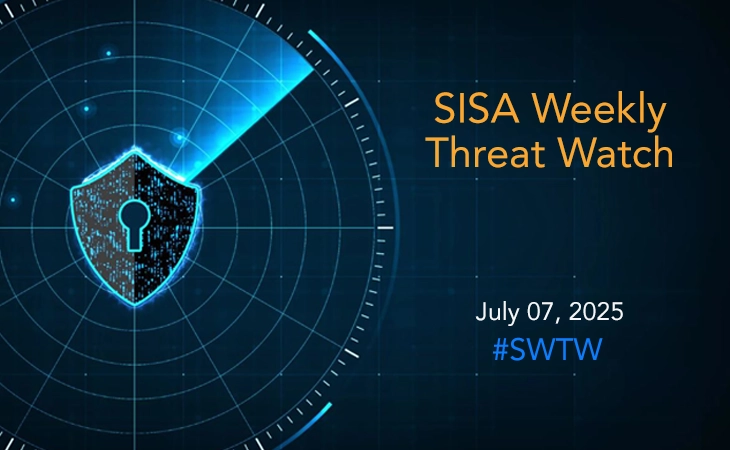
What is Vulnerability Assessment? Why Is It Important in 2025?
In the rapidly evolving digital landscape of 2025, the importance of cybersecurity has never been more pronounced. As cyber threats grow in sophistication and frequency, organizations must adopt proactive measures to safeguard their digital assets. One such critical measure is vulnerability assessment.
What is Vulnerability Assessment?
A vulnerability assessment is a systematic process to identify, classify, and prioritize security vulnerabilities in computer systems, applications, and network infrastructures. This process helps organizations understand potential risks and develop strategies to mitigate these vulnerabilities before they can be exploited by cybercriminals.
Vulnerability assessments can involve both automated and manual techniques to ensure comprehensive coverage. These assessments typically target different layers of technology, such as host-based, network-based, and application-layer assessments, to uncover a wide range of vulnerabilities.
How Does a Vulnerability Assessment Work?
The vulnerability assessment process involves several key steps:
- Planning: This initial phase involves defining the scope and objectives of the assessment. Organizations must identify which systems and networks will be covered and gather the necessary resources for the assessment.
- Scanning: Using automated tools, security analysts scan the systems for vulnerabilities. This phase may also involve manual testing to identify issues that automated tools might miss.
- Analysis: Once vulnerabilities are identified, the next step is to analyze their root causes and potential impacts. This involves determining the severity of each vulnerability and understanding how they could be exploited.
- Risk Assessment: In this phase, vulnerabilities are prioritized based on their severity and the risk they pose to the organization. Factors such as the affected system, the sensitivity of the data at risk, and the ease of exploitation are considered.
- Remediation: The final phase involves developing and implementing a plan to address the identified vulnerabilities. This may include applying patches, updating configurations, or implementing new security controls.
- Repetition: Vulnerability assessment is not a one-time activity. It must be conducted regularly to ensure ongoing security, especially after significant changes to the IT environment.
Importance of Vulnerability Assessment in 2025
The digital landscape of 2025 presents numerous challenges and opportunities for organizations. Here are several reasons why vulnerability assessment is crucial this year:
- Increased Cyber Threats: With the rise of sophisticated cyberattacks, organizations must stay ahead of potential threats. Regular vulnerability assessments help identify and address security weaknesses before they can be exploited.
- Compliance Requirements: Many industries are subject to strict regulatory requirements, such as GDPR, CCPA, and PCI DSS. Regular vulnerability assessments help ensure compliance with these regulations and avoid hefty fines.
- Maintaining Customer Trust: Data breaches can severely damage an organization’s reputation. By proactively identifying and mitigating vulnerabilities, organizations can build and maintain trust with their customers and stakeholders.
- Protecting Sensitive Data: Personal and financial information is highly valuable to cybercriminals. Effective vulnerability assessments help safeguard this data from unauthorized access and potential breaches.
- Business Continuity: Cyberattacks can disrupt business operations, leading to significant financial losses. Vulnerability assessments ensure that critical systems and data remain secure and accessible, supporting business continuity.
Best Practices for Conducting Vulnerability Assessments
To maximize the effectiveness of vulnerability assessments, organizations should follow these best practices:
- Comprehensive Coverage: Ensure that all critical systems, applications, and networks are included in the assessment. Use a combination of automated and manual techniques for thorough coverage.
- Regular Assessments: Conduct vulnerability assessments regularly, at least annually, or after significant changes to the IT environment. This helps maintain a strong security posture.
- Use of Advanced Tools: Leverage advanced vulnerability assessment tools that can provide detailed insights into security weaknesses. These tools should be updated regularly to recognize new and emerging threats.
- Collaboration and Communication: Foster collaboration between IT, security, and development teams to ensure effective remediation of vulnerabilities. Clear communication of findings and remediation plans is essential.
- Continuous Improvement: Use the results of vulnerability assessments to continuously improve security measures. Regularly review and update security policies, procedures, and technologies.
Conclusion
In 2025, vulnerability assessments are an indispensable part of any organization’s cybersecurity strategy. By regularly identifying and addressing security weaknesses, organizations can protect their sensitive data, maintain compliance with regulatory standards, and ensure business continuity. As cyber threats continue to evolve, staying proactive with vulnerability assessments is essential for safeguarding digital assets and maintaining a robust security posture.
Also Read – What is Risk Assessment? Misconceptions, Challenges & Opportunities
FAQs
How can a vulnerability assessment improve an organization’s cybersecurity posture?
A vulnerability assessment helps identify weaknesses and potential entry points for cyberattacks, allowing organizations to address and mitigate these vulnerabilities proactively. This enhances the overall security posture by reducing the risk of breaches and improving the resilience of systems against attacks.
What are the common tools used in vulnerability assessments?
Common tools include Nessus, OpenVAS, Qualys, and Nexpose for network and host-based scans. For application security, tools like Burp Suite, OWASP ZAP, and Acunetix are widely used. These tools help automate the process of identifying vulnerabilities and assessing their severity.
Can vulnerability assessments detect zero-day vulnerabilities?
Vulnerability assessments primarily identify known vulnerabilities using existing databases and patterns. Detecting zero-day vulnerabilities, which are unknown or newly discovered, typically requires advanced threat detection methods, continuous monitoring, and proactive security measures like threat intelligence and behavior analysis.
What role do regulatory compliance standards play in vulnerability assessments?
Regulatory compliance standards such as GDPR, PCI DSS, and HIPAA mandate regular vulnerability assessments to ensure that organizations maintain a high level of security and protect sensitive data. Adhering to these standards not only helps in compliance but also enhances the overall security framework of the organization.
How do organizations prioritize vulnerabilities identified during an assessment?
Organizations prioritize vulnerabilities based on factors such as the severity of the vulnerability, the potential impact on business operations, the ease of exploitation, the presence of sensitive data, and regulatory requirements. Critical vulnerabilities that pose a significant risk to key systems and data are addressed first.
Latest
Blogs
Whitepapers
Monthly Threat Brief
Customer Success Stories
 USA
USA India
India APAC
APAC Middle East
Middle East Global
Global






 Facebook
Facebook Linkedin
Linkedin  X
X Youtube
Youtube






